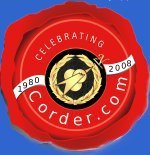

Corder Enterprises International
|
|
| The Green Datacenter |
E-Mail This Page
To a Friend.



VCP & VCIs
CP050 - Perl Programming
Course Description: Perl has been described as C, awk, sed, and shell programming all wrapped into one language. Learn how to take advantage of Perl's power through examples and extensive hands-on exercises. This course introduces object-oriented programming in Perl.Audience: Programmers and system administrators.
Prerequisites: Fundamentals of UNIX. C Programming is recommended.
Course Contents
Overview of Perl
What is Perl? Running Perl Programs Example Programs Perl Variables
Three Types of Variables Variable Names and Syntax Variable Naming Lists Scalar and List Contexts The Repetition Operator Arrays and Hashes
Arrays Example - The @ARGV Array Array Functions Array Slices Hashes Hash Functions Scalar and List Contexts Revisited I/O: Input Operations and File I/O Filehandles
The open Function The Input Operator <> Default Input Operator The print Function File Operation Functions Reading Directories Operators
Perl operators Operators, Functions and Precedence File Test Operators Assignment Operator Notations The Range Operator Quotation Operators Pattern Matching Operators Flow Control
Simple Statements Simple Statement Modifiers Compound Statements The next, last and redo Statements The for Loop The foreach Loop Regular Expressions
Pattern Matching Overview The Substitution Operator Regular Expressions Special Characters Quantifiers (*, +, ?, {}) Assertions (^, $, \b, \B) Subroutines
Overview of Subroutines Passing Arguments Local Variables Passing Names Returning Values Quoting and Interpolation
String Literals Interpolation Array Substitution Backslashes and Single Quotes Command Substitution Here Documents References
References Creating References Using References Passing References as Arguments to Subroutines Anonymous Composers Hard References as Hash Keys The Symbol Table Complex Data Structures
Two-dimensional Arrays in Perl Anonymous Arrays and Anonymous Hashes Arrays of Arrays Arrays of References A Hash of Arrays A Hash of Hashes Packages and Modules
Packages BEGIN and END Routines require vs. use Modules The bless Function Object-Oriented Programming in Perl
What is Object-Oriented? Why Use Object-Oriented Programming? Classes, Objects, and Methods in Perl Inheritance, the "is-a" Relationship Containment, the "has-a" Relationship Overloaded Operators Destructors Advanced Regular Expressions
Substrings Substrings in List Context RE Special Variables RE Options Multiline Res Substituting with an Expression Binary Data Structures
Variable-Length (Delimited) Fields Variable vs. Fixed Handling Binary Data The pack() Function The unpack() function The read () Function C Data Structures Multitasking with Perl
What are Single and Multitasking? UNIX Multitasking Concepts Process Creation with fork Program Loading with exec() File Descriptor Inheritance How UNIX Opens Files One-Way Data Flow - Pipes Final Result - Page Viewing Sockets Programming in Perl
Clients and Servers Ports and Services Berkeley Sockets Data Structures of the Sockets API Socket System Calls Generic Client/Server Models A Little Web Server Appendix 1 - The Perl Distribution
Where Can You Get Perl? How Do You Build Perl? What Gets Created and Installed? Differences Between Platforms Appendix 2 - The Perl Debugger
Overview of the Perl debugger Debugger Commands Non-Debugger Commands Listing Lines Single Stepping Setting and Clearing Breakpoints Modifying the Debugger The -w and -D Flags

Course
Flyer

C.E.I.
Flyer
Course
Offering
3mbAIX | HPUX | Linux | Solaris
General UNIX | Web | PerlCopywrite 1980 - 2015

